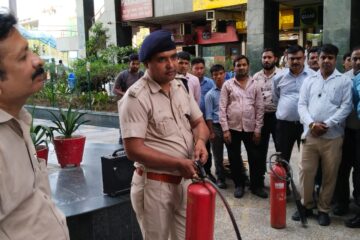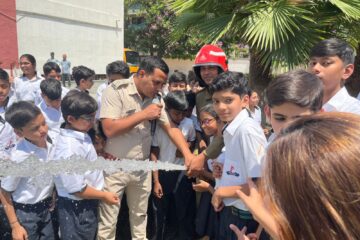
Fire Truck
Fire trucks are an essential part of any firefighting operation. These specialized vehicles play a crucial role in responding to emergencies and ensuring the safety of both firefighters and the public. In this article, we will explore the different components of a fire truck, their functions, and the importance of these vehicles in firefighting operations.
1. What is Fire Truck
Fire trucks, also known as fire engines, are specialized vehicles designed to respond to fire-related emergencies. They are equipped with various tools and equipment to combat fires, rescue trapped individuals, and handle hazardous materials. Fire trucks are an integral part of firefighting departments worldwide, serving as a lifeline during emergencies.
2. The Purpose of Fire Truck
The primary purpose of fire trucks is to transport firefighters and firefighting equipment to the scene of an emergency quickly. These vehicles carry essential tools, such as hoses, ladders, and pumps, necessary to suppress fires effectively. Fire trucks also provide a stable platform for firefighters to operate from, ensuring their safety during firefighting operations.
3. Types of Fire Trucks
There are several types of fire trucks, each designed for specific firefighting tasks. Some common types include:
- Engine/Pumper Trucks: These are the most common type of fire trucks and are equipped with water pumps and tanks for fire suppression.
- Aerial Trucks: Aerial trucks feature extendable ladders or platforms, allowing firefighters to access elevated areas during rescue operations.
- Rescue Trucks: Rescue trucks are designed to carry specialized equipment for extrication, such as the Jaws of Life, used to free trapped individuals.
- Wildland Fire Trucks: These trucks are designed to navigate rough terrain and carry water tanks and hoses to fight fires in forested areas.
- Airport Crash Trucks: Airport crash trucks are specifically designed for firefighting and rescue operations at airports, equipped with powerful water cannons and firefighting foam systems.
4. Components of a Fire Truck
A fire truck consists of various components that enable it to perform its firefighting duties effectively. These components include:
Chassis
The chassis forms the foundation of the fire truck. It provides structural support and houses the engine, transmission, and other mechanical components.
Cab
The cab is the driver and crew compartment of the fire truck. It accommodates the driver, officer, and firefighters during transit to and from the emergency site.
Water Pump
The water pump is a critical component of a fire truck. It pressurizes the water from the tank and
delivers it to the hoses for fire suppression.
Water Tank
The water tank stores the water used for firefighting. Its capacity varies depending on the size and purpose of the fire truck.
Hose Reels
Hose reels store and deploy fire hoses. They allow firefighters to connect hoses quickly and efficiently to the water supply.
Ladders
Fire trucks are equipped with extendable ladders, providing access to elevated areas during rescue operations or firefighting tasks.
Equipment Storage
Fire trucks have compartments and storage areas to store firefighting tools, such as axes, extinguishers, breathing apparatus, and medical supplies.
5. Specialized Fire Trucks
Apart from the common types mentioned earlier, there are specialized fire trucks designed for specific purposes. These include:
Aerial Trucks
Aerial trucks have extendable ladders or platforms that enable firefighters to reach tall buildings and rescue individuals trapped at higher elevations.
Rescue Trucks
Rescue trucks carry specialized tools and equipment for rescue operations, such as cutting and lifting devices, airbags, and lighting equipment.
Wildland Fire Trucks
Wildland fire trucks are designed to navigate rugged terrain and carry water tanks, pumps, and hoses for combating fires in forested areas.
Airport Crash Trucks
Airport crash trucks are specifically designed for firefighting and rescue operations at airports. They are equipped with powerful water cannons, foam systems, and specialized communication equipment.
6. Fire Truck Operations
Fire trucks play a vital role in firefighting operations. Here are some key aspects of their operations:
Dispatch and Response
When a fire emergency is reported, the fire department dispatches fire trucks to the scene. Firefighters respond promptly, ensuring quick arrival and initiation of firefighting operations.
Fire Suppression
Fire trucks are primarily responsible for fire suppression. They connect hoses to fire hydrants or other water sources, using water or firefighting foam to extinguish fires.
Rescue Operations
In addition to firefighting, fire trucks are used for rescue operations. They provide access to elevated areas, perform vehicle extrication, and assist in evacuations during emergencies.
Hazardous Material Response
Fire trucks equipped with specialized equipment and materials are involved in handling hazardous materials incidents. They mitigate risks and protect both responders and the public from dangerous substances.
7. Training and Maintenance of Fire Trucks
Firefighters undergo rigorous training to operate fire trucks effectively and safely. Additionally, regular maintenance is crucial to ensure the reliability and functionality of these vehicles. Key aspects include:
Driver Training
Firefighters receive training in driving fire trucks, which involves understanding vehicle dynamics, operating emergency lights and sirens, and adhering to traffic regulations.
Vehicle Maintenance
Fire trucks require regular maintenance to keep them in optimal condition. This includes inspections, servicing, and repairs to mechanical, electrical, and firefighting systems.
8. Innovations in Fire Truck Technology
Advancements in technology have led to various innovations in fire truck design and equipment. Some notable examples include:
Foam Systems
Fire trucks now come equipped with foam systems, which allow for more effective suppression of certain types of fires by smothering and cooling the flames.
Thermal Imaging Cameras
Thermal imaging cameras help firefighters identify heat sources, detect individuals in smoke-filled environments, and assess the spread of fires.
GPS Navigation Systems
GPS navigation systems assist fire truck drivers in reaching emergency locations quickly and efficiently, optimizing response times.
9. Challenges in Fire Truck Design and Usage
Despite their importance, fire trucks face several challenges in design and usage. Some common challenges include:
Size and Weight Limitations
Fire trucks need to strike a balance between carrying sufficient equipment and adhering to size and weight limitations imposed by road regulations and infrastructure.
Maneuverability
The size and weight of fire trucks
can affect their maneuverability, especially in narrow streets or congested areas. Design considerations aim to optimize maneuverability without compromising functionality.
Cost and Budget Constraints
Fire departments often face budget constraints, limiting their ability to purchase or upgrade fire trucks with the latest technology. Balancing cost and functionality is a crucial consideration.
10. Conclusion
Fire trucks are indispensable in firefighting operations, providing transportation, water supply, and essential equipment for fire suppression and rescue operations. These specialized vehicles, with their various components and functions, enable firefighters to respond to emergencies effectively and save lives. Through ongoing technological advancements and training, fire trucks continue to evolve, ensuring the safety and efficiency of firefighting operations.
11. FAQs
Q1: How much water can a fire truck carry?
A fire truck’s water-carrying capacity depends on its size and purpose. It can range from a few hundred gallons to several thousand gallons.
Q2: Can fire trucks be used for medical emergencies?
Yes, fire trucks often carry medical supplies and can provide initial medical assistance until dedicated medical units arrive at the scene.
Q3: What is the lifespan of a fire truck?
The lifespan of a fire truck varies depending on factors such as maintenance, usage, and technological advancements. On average, it can range from 10 to 20 years.
Q4: Are fire trucks only used for firefighting?
No, fire trucks are versatile and used for various purposes, including fire suppression, rescue operations, hazardous material response, and even community outreach programs.
Q5: How do firefighters control the water flow from fire trucks?
Firefighters control the water flow by operating valves and controls on the fire truck, regulating the pressure, and directing the water to the desired location.
In conclusion, fire trucks are crucial assets in firefighting operations, ensuring the safety of both firefighters and the public. Their specialized components, diverse types, and multifunctional capabilities make them indispensable in emergencies. As technology continues to advance and fire departments adapt to new challenges, fire trucks will remain at the forefront of firefighting efforts, helping protect lives and property.

